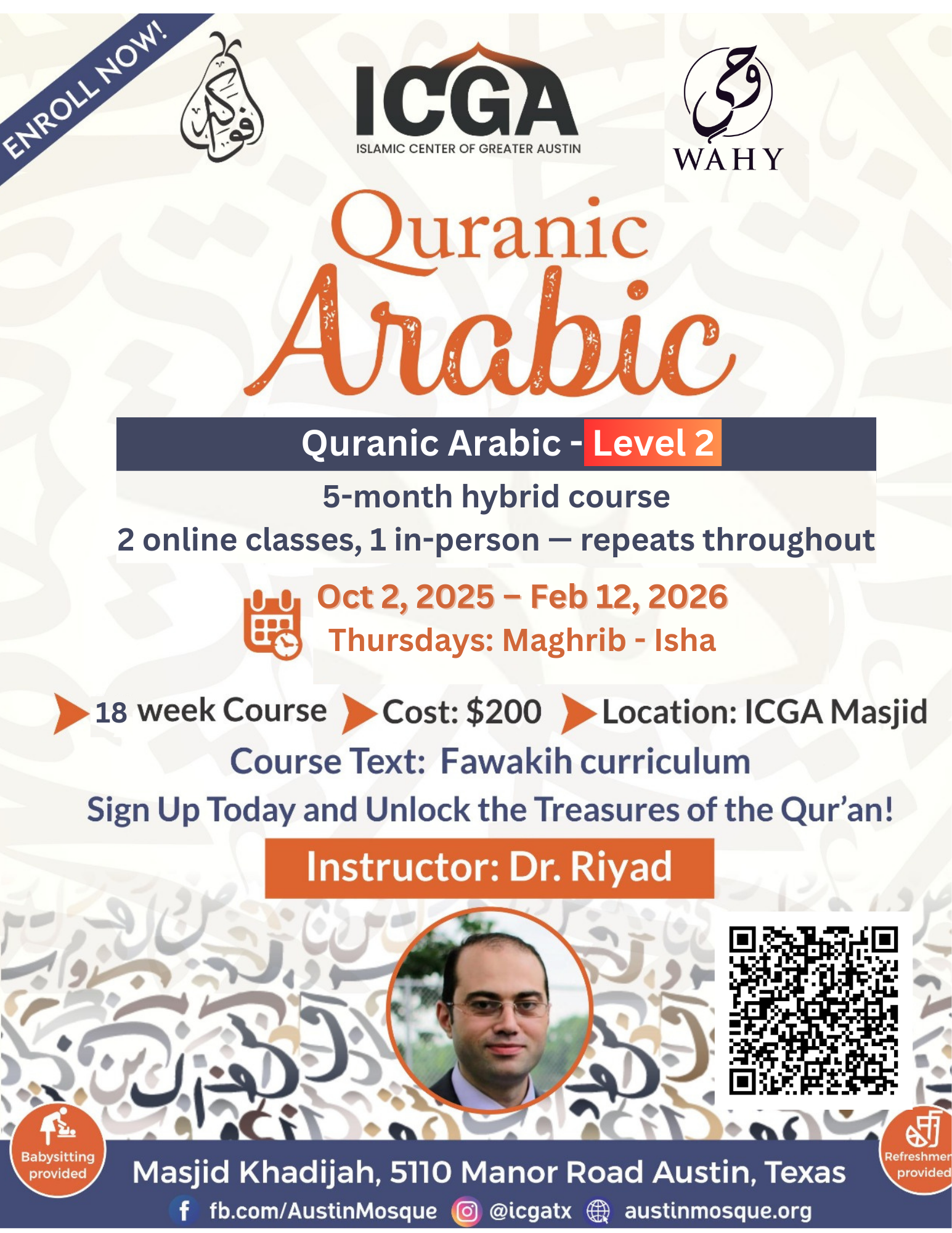Quranic Arabic Level 2A (ICGA)
Sign Up Today and Unlock the Treasures of the Qur’an!

18 weeks of instruction |
Fawakih Textbook for level 2A |
Access to Recorded Classes |
Eligibility: Students must have either completed Level 1 or scored above 70% on the Level 1 evaluation test. |
What Does Fawakih's Quranic Arabic- Level 2 cover?
Level 2 of Fawakih's Quranic Arabic Curriculum builds upon the basic sentence structures introduced in Level 1. Students are introduced to nawāsikh al-jumal (such as inna and kāna and their sisters), the jussive, as well as several verbal constructions such as the passive voice, past continuous, habitual actions, and emphatic future tense. In Morphology, students are introduced to patterns of derived nouns such as the emphatic (ism al-mubalagha), noun of time and place (ism al-zamān wa al-makān), noun of instrument (ism al-āla). Students are also introduced to the ten major augmented verb forms and use of a root-based dictionary. These concepts are then reinforced through Text Analysis (selections from Qisas al-Nabiyeen) and Listening (short videos on Prophetic sunnas), and Quran Analysis (continued selections from the 30th Juz) modules.
Apply knowledge of nawāsikh al-jumal (sentence modifiers) such as inna and kāna and their sisters to nominal sentences.
Recognize and use the jussive mood in verbs to express prohibitions and conditions.
Identify and construct sentences in the passive voice.
Understand and use verbal constructions such as the past continuous, habitual actions, and emphatic future tense.
Demonstrate mastery of verb-doer agreement and distinguish between transitive and intransitive verbs.
Use grammatical connectors (conjunctions) to build more complex sentences.
Accurately analyze Qur’ānic text selections (from Juzʾ ʿAmma) for these grammatical features.
Identify and produce derived nouns, including:
Emphatic nouns (ism al-mubālaghah)
Nouns of time and place (ism al-zamān wa al-makān)
Nouns of instrument (ism al-ālah)
Conjugate and recognize the ten major augmented verb forms (II–X).
Distinguish between doer nouns, receiver nouns, and nouns of intensity.
Navigate and use a root-based dictionary to identify patterns of words.
Reinforce grammar and morphology concepts through text analysis of Qisas al-Nabiyyīn (Stories of the Prophets).
Strengthen listening comprehension by engaging with short videos on Prophetic Sunnas.
Continue analysis of Qur’ānic passages in Juzʾ ʿAmma, focusing on integrating grammar, morphology, and meaning.
A) LISTENING COMPONENT
B) WRITING & SPEAKING COMPONENT